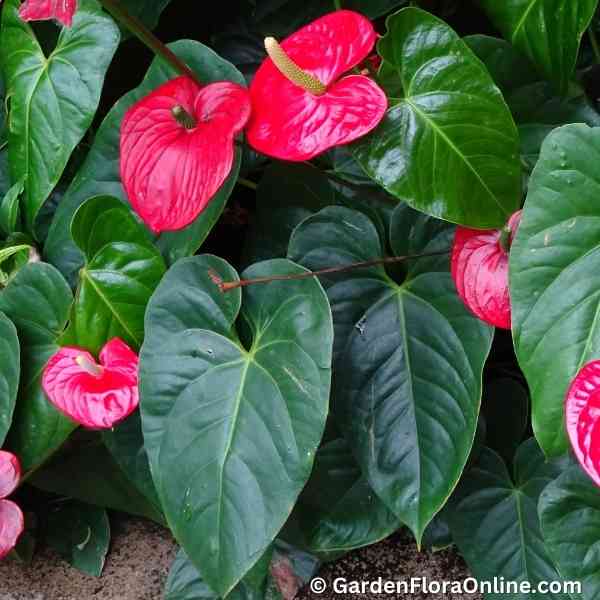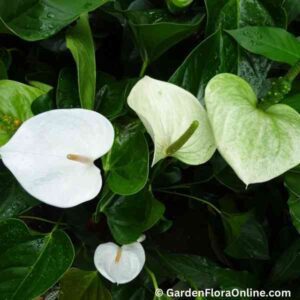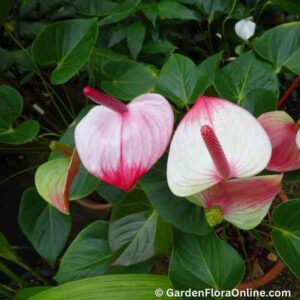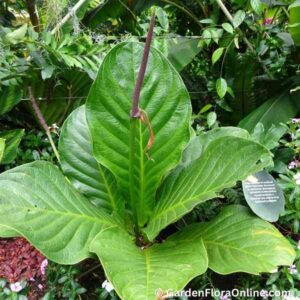Anthurium andraeanum (Flamingo Flower)
Anthurium andraeanum, known as Flamingo Flower, Flamingo Lily, Laceleaf, or Tail flower, native to Colombia and Ecuador. Epiphytic evergreen tropical perennial of the Araceae family. Characterized by waxy, palette-like red spathes and dark green foliage. Reaches height of 0.4 m. Drooping, heart-shaped, dark green leaves up to 0.2 m long arise from clump on elongated stems at crown. Axillary flowers consist of creamy yellow spadix surrounded by broad, flat, waxy red spathe approximately 0.15 m wide. Flowers persist for extended periods and may bloom year-round under optimal conditions. Fruit formation uncommon in indoor cultivation.
Cultivation: Cultivate as an indoor plant using a well-draining, peat-based potting mix with a layer of coarse material at the base for drainage. Requires bright, indirect light, avoiding direct sunlight, especially in summer, as excessive shade may inhibit flowering. Provide consistent moisture throughout the year, ensuring the soil does not dry out. Does not need a dormant period during winter. Thrives in high humidity and prefers regular temperatures in warmer months with a minimum of 16°C in cooler periods. Repot every two years to prevent the buildup of excess minerals in the soil. Cover exposed roots with sphagnum moss to retain moisture. Avoid using insecticides directly on flowers, as they may cause damage.
Etymology: The genus name Anthurium is derived from the Greek words anthos, meaning “flower,” and oura, meaning “tail,” referring to the tail-like spadix characteristic of its flowers. The specific epithet andraeanum honors Édouard André, a French botanist and horticulturist known for his work with tropical plants. The common name “Flamingo Flower” refers to its brightly colored spathes, resembling the vivid plumage of flamingos.








